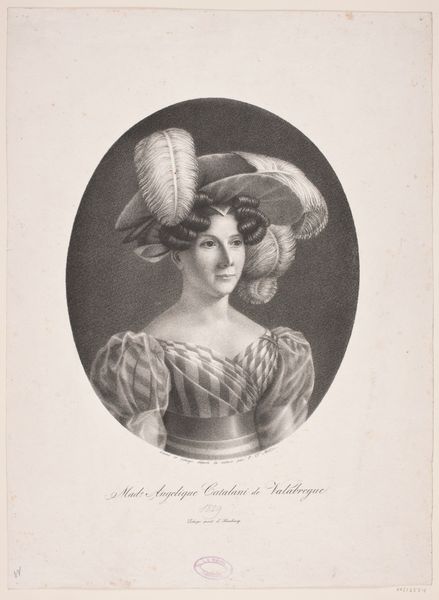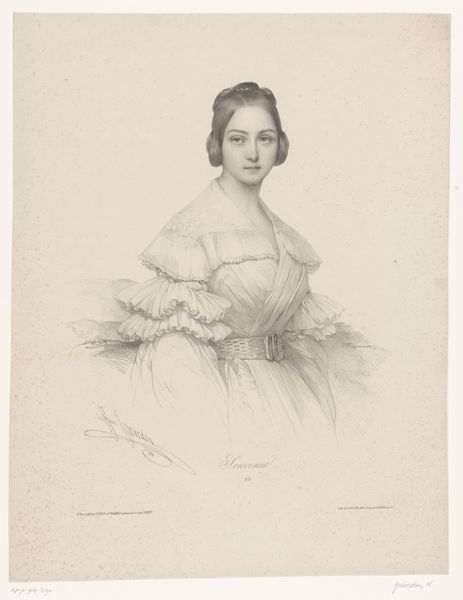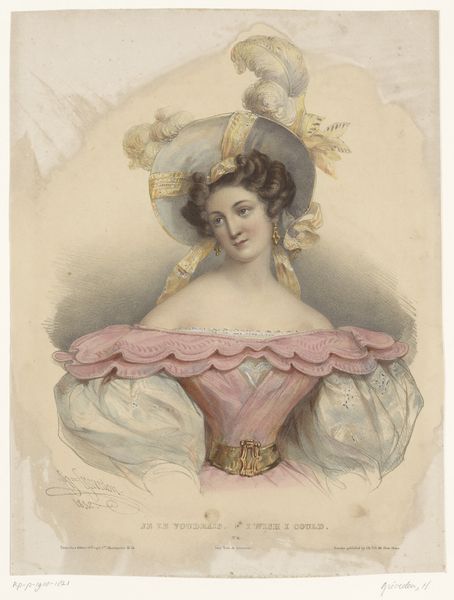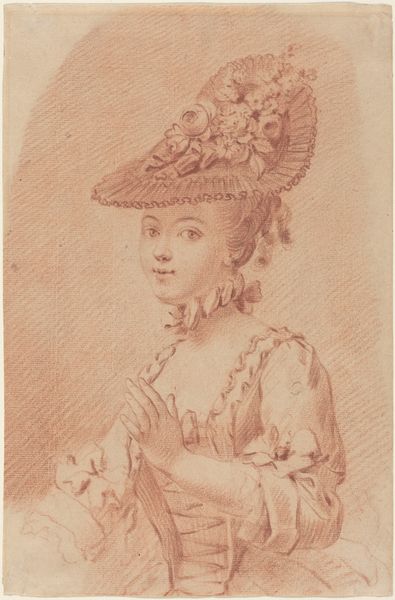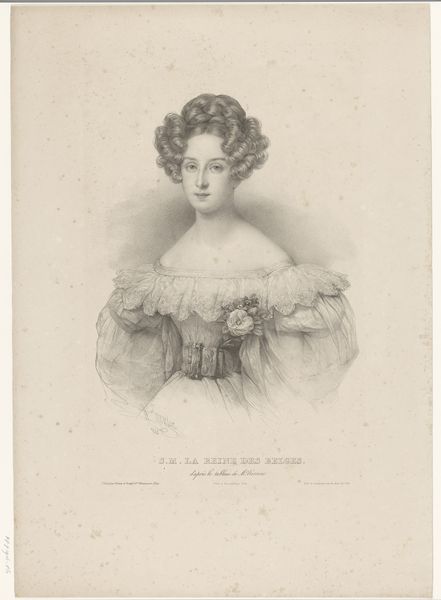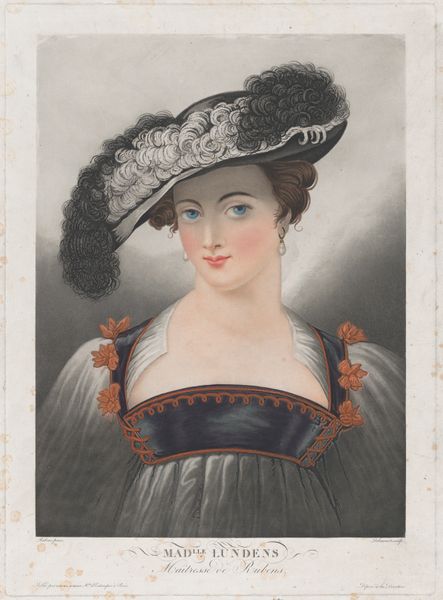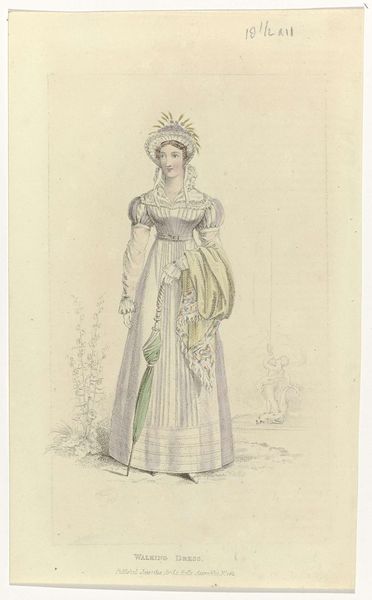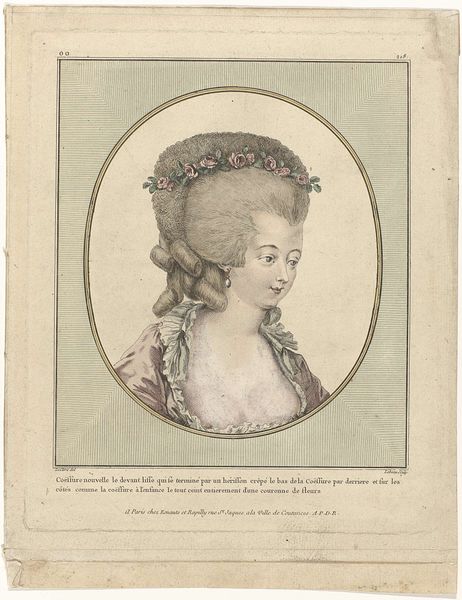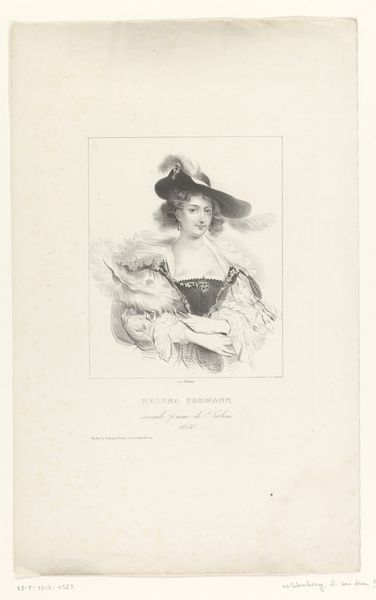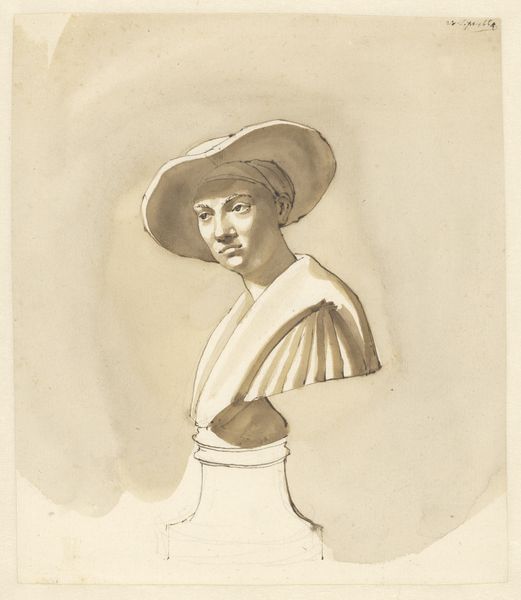
lithograph, print
#
portrait
#
lithograph
# print
#
figuration
#
romanticism
#
genre-painting
Dimensions: height 383 mm, width 267 mm
Copyright: Rijks Museum: Open Domain
Editor: This is "Portrait of a Young Woman with Hat with Feather and Bow" by Henri Grevedon, made sometime between 1832 and 1850. It's a lithograph, and I'm struck by how its delicate colors convey such an innocent and gentle aura. What social context might have influenced this work? Curator: That's a keen observation! Consider the period - the rise of the bourgeoisie and their emphasis on domesticity and virtue, especially for women. Portraiture, disseminated via prints like this lithograph, played a crucial role. Do you notice how the artist highlights specific details? Editor: Yes, the focus seems to be on her attire: the hat, the ribbons, even the belt buckle. It’s less about revealing her inner self, and more about portraying a certain social standing. Curator: Precisely. These portraits, particularly through printmaking, became accessible to a wider audience. What does the ability to replicate an image of refined beauty signify to society, would you say? Editor: I guess that it helped solidify visual standards and encouraged emulation across different social strata. The 'Romanticism' here almost feels…manufactured? It's a style, as much as a sincere emotional expression. Curator: Interesting observation. This aligns with how social expectations were often imposed on women through visual culture. Her fashionable attire is her 'public role'. Were these pieces commissioned often? Editor: Possibly. If that’s true, that introduces the gallery system and its patronage which would have created demand for these items...It is a little unsettling. Curator: Yes! So, you see how understanding the social and economic factors, the politics of image-making in the 19th century, reshapes how we interpret her calm expression? It certainly alters my feelings on the subject of her emotions. Editor: I hadn't considered that aspect. Looking at it that way gives the work a new layer of complexity and a new degree of understanding of our own potential bias when first looking at it. Thanks for that, this really made me think!
Comments
No comments
Be the first to comment and join the conversation on the ultimate creative platform.

